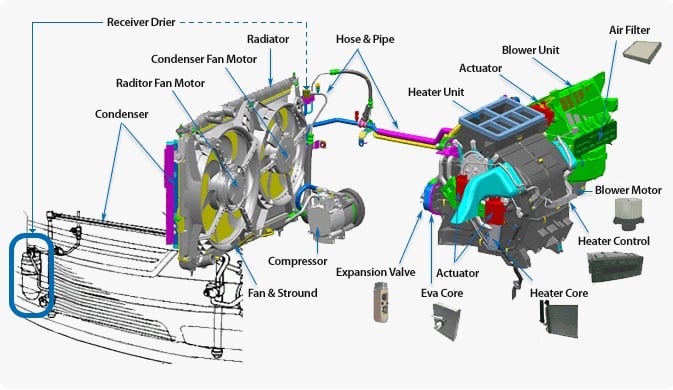Air Conditioning Facts

We have put together some interesting facts about your vehicle A/C system. We hope that these facts and information will go towards why you should use your A/C in your vehicle, how certain components function and why your A/C system may not be working. It is a fact that you will lose a good percentage of refrigerant within 3 years so this will lead to warmer temperatures in the cabin, fuel economy could be affected due to the A/C system working harder to operate effectively. If your system does not operate at all then you will damage components with moisture and things like your heater matrix may contaminate which can lead to a musty smell in your cabin.
The Parts of an Automotive Air-Conditioning Unit
When refrigerant enters the compressor, it is a low-pressure gas. The compressor then puts the gas under pressure and then sends it to the condenser.
In the condenser, the pressurized gas is cooled until it forms a high-pressure liquid that will be used to cool the automobile. From there, the liquid refrigerant will pass through a receiver dryer that will remove any water from the refrigerant. After passing through the thermal expansion valve, the refrigerant reaches the evaporator.
The evaporator is the only part of the air-conditioning unit not located in the engine compartment. The refrigerant will enter the evaporator at around 32 degrees Fahrenheit, cooling the evaporator coil. A fan that blows over the evaporator coil pushes the cold air into the cabin.
As the refrigerant leaves the evaporator coil, it is heated by the temperature of the car, and using heat transference, takes the heat of the car with it as it enters the compressor and starts the process again.
Proper air-conditioning maintenance, including replacing refrigerant, changing filters and cleaning the coils periodically is a must for the unit to function properly.